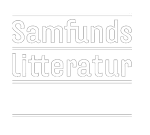Eisner, Lotte H. (1952). L‘Ecran Démoniaque. Influence de Max Reinhardt et de l’expressionisme. Paris: Le Terrain Vague [Ty. udg 1955 (Die dämonische Leinwand); Eng. overs. 1969]
Eisner, Lotte H. (1958). “Stile und Gattungen des Films.” I: Eisner, Lotte H. & Friedrich, Heinz (red.). Film. Rundfunk. Fernsehen. (Das Fischer Lexicon, 9). Frankfurt am Main: Fischer, s. 264
Eisner, Lotte H. (1969). The Haunted Screen. Expressionism in the German cinema and the influence of Max Reinhardt. Overs. af Roger Greaves. London: Thames and Hudson/Berkeley, Calif.: University of California Press
Elsaesser, Thomas (2007). “Social Mobility and the Fantastic. German Silent Cinema.” I: Grainge, Paul; Jankovich, Mark & Monteith, Sharon (red.). Film Histories. An introduction and reader. Edinburgh: Edinburgh University Press, s. 130-146
Kaes, Anton (2009). Shell Shock Cinema. Weimar Culture and the Wounds of War. Princeton, N.J.: Princeton University Press [Genoptr. 2011]
Kracauer, Siegfried (1947). From Caligari to Hitler. A psychological history of the German film. Princeton, N.J.: Princeton University Press [Rev. og udv. udg. red. og med indl. ved Leonardo Quaresima, 2004]
Robinson, David (1997). Das Cabinet des Dr. Caligari. (BFI Film Classics). London: British Film Institute. [2. udg. 2013]
Salt, Barry (1979). “From Caligari to WHO?” Sight & Sound, 48 (2), s. 119-123. [Genoptr. i Salt, Barry (2006a). Moving into Pictures. London: Starword, s. 55-62]
Salt, Barry (2006b). “From German Stage to German Screen.” I: Moving into Pictures. London: Starword, s. 179-188
Scheunemann, Dietrich (red.) (2003). Expressionist Film – New Perspectives. (Studies in German Literature Linguistics and Culture). Rochester, N.Y.: Camden House
Thompson, Kristin & Bordwell, David (1994/2009). Film History. An Introduction. Boston: McGraw-Hill [2. udg. 2002; 3. udg. 2009]
Tybjerg, Casper (1997). “Stilvilje og film.” Sekvens, 97, s. 71-79



